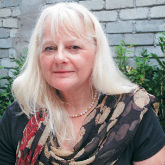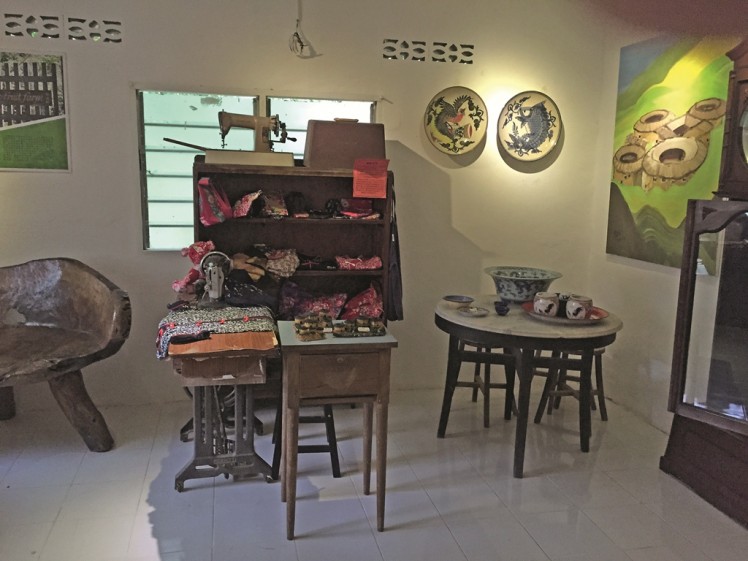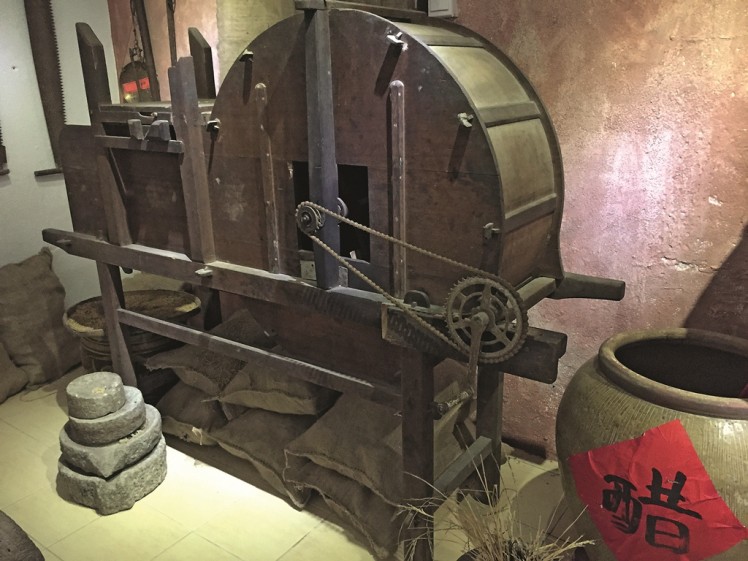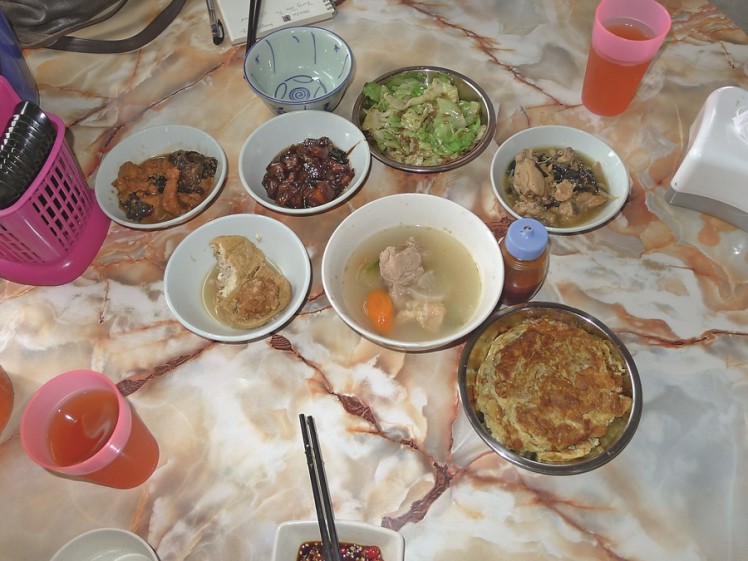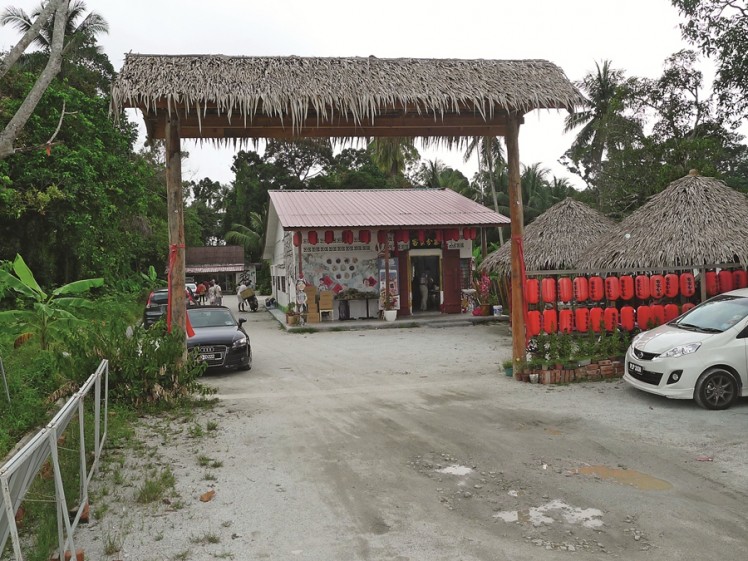Typical Hakka Items
Although the Hakka community hasn’t traditionally had as high a profile in Malaysia as the Hokkien or the Cantonese communities, there are signs that things are about to change. Frances Wilks investigates the heritage of the Hakka Culture in Penang and hears about plans for the future.
The Hakka are an intriguing Chinese community as they have continually migrated for thousands of years. So much so in fact that they have been nicknamed “the wandering Jews of China.” The Chinese character for Hakka literally means “guest families” as they were not thought of as native even in areas where they had settled for generations. Their origins are uncertain but they probably came from Northern China more than thousand years ago and in a series of migrations they moved to Southern China. Although placing importance on friendly relations with their neighbours, they resisted the pressure to assimilate. For example, Hakka women didn’t bind their feet, when the practice was common in China. As immigrants, the Hakka often found that most of the agricultural land had already been taken. As a result, many Hakka men turned towards careers in the military or in public service and laid a great stress on education. But they farmed where they could and were also involved in mining. In later days, they have been at the forefront of entrepreneurship and business. A key part of their culture was communal living and they built circular villages, known as toulou, with only one entrance and no windows on the ground floor, so they could be easily defended against hostile neighbours. Some of these toulous are now part of a UNESCO World Heritage Site in Fujian.
A Short History
Rice Threshing Machine
Despite the fact that there are only about 80 million people with Hakka ancestry, they have had a significant influence on Chinese and indeed on world history. Dr Sun Yat-Sen, the “father” of modern China who lived in Penang in 1911, was a Hakka, as was Lee Quan Yew, the architect of Singapore’s success. Even closer to home, Cheong Fatt Tze, the immensely rich tycoon who built the iconic Blue Mansion in George Town was also a Hakka. In the arts, writer Han Suyin and shoe designer Jimmy Choo both claim Hakka blood. In Kuala Lumpur, the first Kapitan Cina, or leader of the Chinese community, was the Hakka Yap Ah Loy and the founder of Taiping, Chung Keng Quee, was also a Hakka. He had substantial tin mining interests and in fact many Hakka migrated to Malaysia to become tin miners.
Recognition
Hakka Food
Recognition is coming for the role that the Hakka have played not only in China but as overseas Chinese. Taiwan has a Hakka Cultural Museum and has designated 20 February as “Hakka Day.” But Malaysia is catching up and this year celebrated its first Hakka Carnival in Balik Pulau in March. One person who is determined to put Hakka culture on the map is Maggie Fong. She’s started a Hakka cultural centre in Balik Pulau in two locations – one in the town, and one nestling in the hills above it. The day we met her she was aproned up and serving lunch to a huge, noisy crowd who’d come down from KL. Hakka food is typically hearty, with an emphasis on meat and vegetables, and only very lightly spiced. The salted radish omelette, the stuffed tofu, the braised pork with woodeared fungus, and the chicken in a yellow wine sauce were all very good. When the clamour of serving had died down, Maggie explained her vision. “I’m a Hakka from Johore Bahru but I married a Penangite and so came to live here 25 years ago. In Balik Pulau, I found a large Hakka community that has been very supportive of my efforts to promote the culture. I began with an old wooden farmhouse in the hills. It was too remote to be a restaurant so it’s been developed into a homestay and a centre for team building. Down here in the town, as well as the restaurant we’re sitting in, we’ve also got a museum.” Her achievement is all the more impressive as she also has a day job, as the “flyer queen” of Penang, organising direct marketing and mail-outs throughout the island. Somehow she has also found the time to pursue a Ph.D. in Business studies.
The museum is only a small affair as yet but there are some intriguing items. Maggie demonstrated a Neolithic-looking wooden cupboard with a door that swings open and a wooden gong – typically Hakka – that was struck to warn the community of any dangers. There are small artefacts that have been donated by local community, such as an old gramophone, a wedding bed, a sewing machine, and various pottery and other domestic objects. There was also an old rice threshing mill, a tribute to the Hakka commitment to agriculture and industry.
Initiatives to Develop the Hakka Legacy in Penang
Hakka Village Balik Pulau
There are other initiatives to develop the Hakka Legacy in Penang. A Hakka Heritage Centre has opened in Burmah Road with a small museum. The Federation of Hakka Associations of Malaysia wants to build an entire Hakka village with a hotel, food court and shops in Balik Pulau. The centrepiece will be a massive, circular building modelled on one in the famous Toulou villages of Fujian and it will be the first to be built outside China. The project is expected to take three years and will end up employing more than a thousand people.
It’s interesting how the Hakka have been so successful at preserving their culture and identity despite the needs of integrating into host communities. One Hakka, the scholar Jessieca Leo, who now lives in Germany but comes from Singapore, has just completed a book Global Hakka: Hakka Identity in the Remaking. She examines what it is to be Hakka in the 21st century. The Hakka diaspora has created different kinds of communities around the world and she shows that the concept of being Hakka is better referred to as “Hakkaness” – a quality determined by lifestyle and personal choices rather than cultural rigidity.
We ended our day in Balik Pulau in Maggie Fong’s wooden farmhouse high in the hills. Nestled on 12 acres of land covered with 20 varieties of fruit trees, and with an idyllic view out to the small island of Pulau Betong, it’s a peaceful place. We heard about the most important legend of the Hakka people, the “Sky Patched Day” when the goddess named Nu Guo is believed to have succeeding in patching holes in the sky and so prevented natural disaster. As a result, on this day the Hakkas refrain from work of any kind. On hearing the story we reflected that the “Sky Patched Day” must indeed be the only day in the year that Maggie Fong takes off from her busy life of developing awareness about the Hakka heritage.
Hakka Village
61, Jalan Bukit Kebun Kha, Pulau Betong, MK 7 Balik Pulau, 11020 Penang.
Tel: 04-2829666 / 016-4116666. Email:[email protected]. Website:www.balikpulaulodge.com
Malaysia Hakka Heritage Centre
3rd Floor, 34, Jalan Burma, 10050 Penang. Phone:+60 4-229 0603 (open some afternoons).
Jessieca Leo Global Hakka http://www.brill.com/products/book/global-hakka
Read more:
- A Visit to the Teochew Puppet and Opera Museum and a Look at Dark Skies in Penang
- 4 Ways to Get Around Penang If You Don’t Have a Car
- Getting to Know Penang’s Lebuh Pantai
Source: The Expat magazine September 2015
"ExpatGo welcomes and encourages comments, input, and divergent opinions. However, we kindly request that you use suitable language in your comments, and refrain from any sort of personal attack, hate speech, or disparaging rhetoric. Comments not in line with this are subject to removal from the site. "

